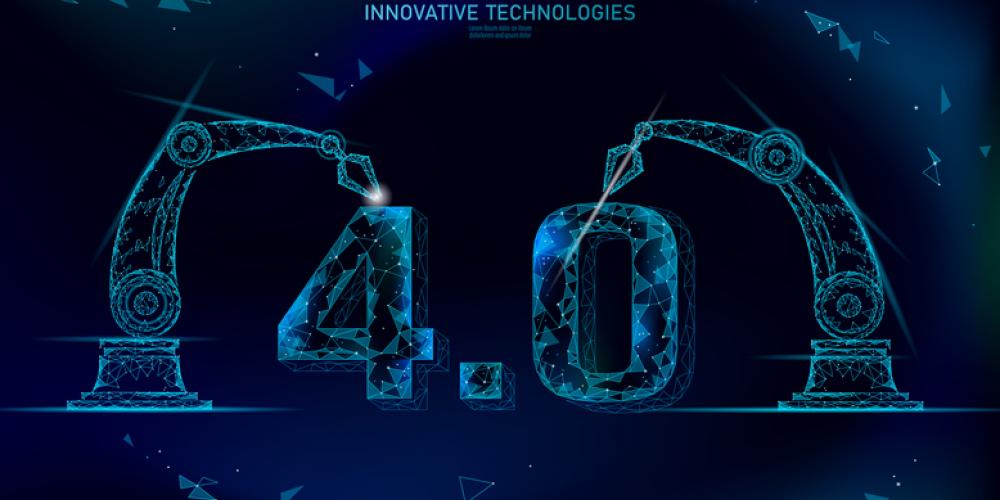Innovation Assessment
It's easy to take part in the Innovate NI Programme. Simply complete the assessment to discover where you are on the Innovation Framework today.

The term ‘Industry 4.0’ is often used when discussing innovation in the manufacturing industry, but does anyone really know what it is all about?
Industry 4.0 refers to a new phase in the Industrial Revolution that focuses heavily on inter-connectivity, automation, machine learning, and real-time data or put simply it’s when businesses use data, computing, technology or internet services to improve their manufacturing processes.
The original industrial revolution in the 1800's was driven by steam, during the 2nd industrial revolution electricity gave rise mass production, while the 3rd industrial revolution saw the introduction of electronics and IT to automate the industry.
In Northern Ireland, few businesses claim to practice Industry 4.0; however when we explore how the local manufacturing industry currently operates, it is evident our companies are actually early 4.0 adopters.
Businesses in NI are using Internet of Things, Cloud Computing, Virtual Reality and Augmented Reality in their day to day activities - they just hadn’t put a label on it.
Industry 4.0 is for everyone, however, each business must figure out if it could provide practical benefits and if so use innovation to move forward. Some of the most common areas of Industry 4.0 that Northern Irish businesses choose to implement are:
Modern day businesses must innovate to thrive, and indeed to survive. So, to help companies decide if Industry 4.0 is a route for innovation we’ve explained these popular topics and some frequently used buzzwords.
Big Data
Around half of all NI businesses currently use Cloud Computing. This means that instead of buying, storing and maintaining large computer servers on-site, most businesses now have an agreement with a Big Data Centre which host servers, and provide digital storage solutions.
Big Data Centres hold a wealth of information such as customers’ online behaviours, transaction information, machine data or inventory lists on behalf of their clients. Businesses access this information, through their software packages or computer applications, and use it to monitor consumer behaviours, market trends, productivity and efficiency and usage levels.
Paper to Digital Processes
In the construction sector Building Information Modelling (BIM) is a process which uses various technologies, digital tools and computer programmes to create or adapt digital representations of physical and functional items or places. Using BIM companies can create completely new designs or they can create a 3D representation of an existing image or item.
Design to Manufacture
BIM is extremely popular in the manufacturing; both large and small businesses use BIM to create a 3D plan of a new or existing item, and 3D printing to create prototypes, moulds or one-off, tailored or personalised products.
3D printing allows companies to produce items on-demand and quickly, for use anywhere in the world – The item can be designed locally using 3D software and emailed to the point of need for production.
Virtual and Augmented Reality
The construction relies on BIM technology to design future construction projects. Before the first sod is cut, clients use virtual reality (VR) to experience the final product.
Virtual and Augmented Reality are simple technology solutions which link the digital plans (BIM) to a headset – similar to downloading an audio file to a phone and linking headphones. When wearing the VR headset customers can walk through their plans and request changes prior to production, maximising efficiency and customer satisfaction.
This technology supports the development of construction plans remotely, ensuring projects can progress during this period of lock down.
VR also provides opportunities for local companies to compete globally. For example construction and manufacturing firms can produce plans for projects anywhere in the world, these plans can be viewed by the client in market and delivered to production partners in market.
Augmented Reality (AR) uses the same approach, however this enables users to see enhanced features or plans on an existing item or structure while wearing the headset.
Artificial Intelligence (AI)
If your business has a printer which automatically re-orders toners then you are using the Internet of Things (IoT). Essentially, AI and IoT is when machines have built in intelligence such as sensors or technology which trigger actions, which would normally require human intervention.
For example, many companies now use sensors in their shelves to detect when stocks dip below a certain threshold. This sensor triggers an automatic order of the product, ensuring production is never halted due to a shortage of parts.
Robotics and Automation
Robotics and automation has become increasingly popular throughout the manufacturing industry. Although it may seem daunting, introducing automation does not need to be extremely expensive - as it has become more widespread in recent years there are now more opportunities for companies to bring second hand, more cost effective options to the manufacturing process.
The addition of automation could ensure social distancing is maintained while continuing to meet demand been able to focus on more labour intensive, high-value work.
These are just a few ways businesses can harness innovation to improve performance. Although Industry 4.0 and the tech-terms which accompany it may seem daunting it is not something to be afraid of, in fact embracing new technologies could provide new opportunities for your business.
If you believe your business is using Industry 4.0 to innovate, take our short assessment to find your innovation level.
Call our Business Support Team on 0800 181 4422
or complete our form and we will contact you shortly.